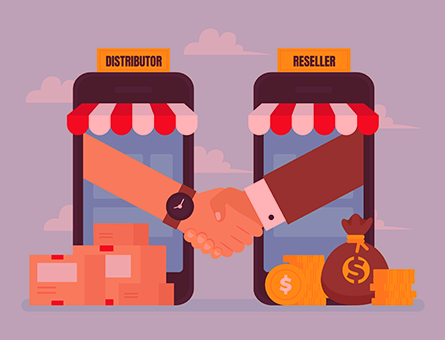eCommerce has seen meteoric growth in recent years. According to Statista, global retail eCommerce sales are projected to reach $7.4 trillion in 2025. However, the online marketplace is increasingly competitive. Shoppers have unlimited choices while their expectations are higher than ever.
In this environment, data and analytics are invaluable for brands looking to survive and thrive. eCommerce analytics enables data-driven decision-making across operations, customer engagement, and financial performance.
As we move into 2024, here are 5 key trends set to define the next era of eCommerce analytics:
1. Predictive Analytics:
Predictive analytics utilizes statistical and machine learning algorithms to make data-driven predictions about future outcomes and trends. Retailers can leverage predictive analytics for diverse use cases like demand forecasting, dynamic pricing, inventory optimization, personalized recommendations, and churn reduction.
According to Allied Market Research, the predictive analytics market is expected to reach $23.6 billion by 2027. eCommerce brands will move towards automated and scalable predictive modeling with machine learning. Focus areas include better anticipation of customer needs, reducing stockouts and unfulfilled orders, and providing competitive prices.
Use case in eCommerce:
- Forecasting demand for a new product launch based on historical sales data, customer demographics, and market trends to optimize inventory levels.
- Developing a machine learning model to predict which customers are at risk of churning and sending targeted promotions to retain them.
- Forecasting return rates for online purchases by product category and demographics to optimize delivery and logistics costs.
2. Voice Analytics:
Voice technology is revolutionizing customer experiences. As per Insider Intelligence, there will be 8.4 billion voice assistants in use by 2024. As voice commerce gains traction, analytics of conversational interfaces will be critical.
Brands can analyze aggregated data from chatbots, virtual assistants, and call center conversations to identify patterns and improve experiences. This includes analyzing intents, entities, sentiment, dwell time, and drop-offs to optimize self-service and human interactions. Natural language processing and speech analytics will be instrumental here.
Use case in eCommerce:
- Analyzing call center conversations to identify common pain points in the ordering process and improve self-service options.
- Checking for keywords and sentiment in customer service chatbot conversations to enhance intent recognition and responses.
- Monitoring call sentiment and emotion analysis to identify angry customers and immediately escalate for priority service.
- Analyzing conversational patterns in customer service calls to identify opportunities to improve IVR menus and routing.
3. Real-Time Analytics:
Real-time analytics enables instant insights by analyzing data as it is generated. This will gain importance for time-sensitive use cases like dynamic pricing, promotions, personalized recommendations, and inventory management.
Advances like Apache Kafka streams and serverless tech such as AWS Lambda are powering complex real-time analytics. As per MarketsandMarkets, the global real-time analytics market size is projected to grow from $7.4 billion in 2020 to $25.2 billion in 2025. eCommerce brands will need the capacity to sense and respond to micro-moments.
Use case in eCommerce:
- Dynamically adjusting prices for products during yearly sales/ festival sales based on current supply and demand.
- Triggering personalized push notifications for add-on products when a customer adds an item to their online cart.
- Personalizing product recommendations as customers browse an eCommerce site based on their activity and profile.
4. Customer Data Platforms:
With customer data spread across channels and systems, many retailers struggle to get a unified customer view. This hampers efforts towards omnichannel personalization. Customer Data Platforms (CDP) consolidate disparate data into a single profile.
CDPs like Segment, ActionIQ, and Adobe Real-time CDP will gain prominence among eCommerce brands. They facilitate customer insights, audience segmentation, campaign management, and attribution modeling. Optimal data governance through techniques like differential privacy will be critical for brand trust.
Use case in eCommerce:
- Building unified customer profiles to create targeted audience segments for omnichannel marketing campaigns.
- Analyzing customer lifetime value to determine investment levels for retention programs.
- Analyzing drivers of cart abandonment by customer persona to improve checkout and payment processes
5. Operational Analytics:
While business metrics get attention, operational analytics will see focused investment. This encompasses using data to streamline logistics, supply chain, fulfillment, and internal business processes.
Operational analytics can drive cost reduction, improved efficiency, and sustainability. According to CBInsights, the global market for retail analytics software will reach $5.1 billion by 2023. Data-driven insights into procurement, inventory, transportation, workforce productivity, and waste reduction will be key competitive differentiators.
Use case in eCommerce:
- Optimizing delivery routes based on historic traffic data, customer density, or shortest path method to reduce fuel costs.
- Analyzing workforce productivity metrics to improve/optimize staffing cost in the long run.
Conclusion:
The applications of analytics in eCommerce are continually evolving. As we move into 2024, these 5 trends will shape the analytics landscape for retailers and direct-to-consumer brands. To succeed amidst cut-throat competition, companies need an analytics strategy that turns data into action. Harnessing these trends will enable fact-based decision-making, stellar customer experiences, and operational excellence. The future belongs to brands that effectively leverage analytics to realize their eCommerce vision.


